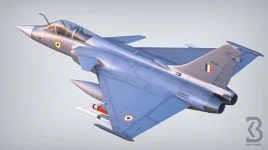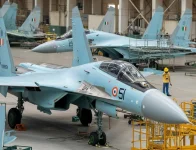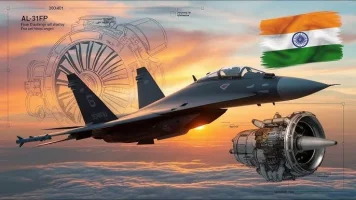- Views: 3K
- Replies: 8
India's journey in developing indigenous fighter aircraft is set to take a significant leap forward with the Tejas Mk2 programme.
Drawing from the extensive and lengthy development of its predecessor, the Tejas Mk1, the new aircraft is slated to complete its complex flight development phase in a remarkably short four-year window.
This accelerated timeline is not just a milestone for the Mk2 but also serves as a crucial foundation that reduces risks for India's even more ambitious fifth-generation stealth fighter, the Advanced Medium Combat Aircraft (AMCA).
Lessons from a Foundational, Yet Protracted, Past
The development of the Light Combat Aircraft (LCA) Tejas Mk1 was a monumental but challenging endeavour for India's aerospace sector.Its flight testing, which spanned over 17 years before achieving Full Operational Clearance (FOC) in 2019, involved more than 3,000 test flights.
These early trials were methodical and painstaking, often focusing on validating a single system per flight. This included fundamental tests of the aircraft's flight envelope, spin recovery characteristics, and the initial integration of its digital fly-by-wire flight control system.
This sequential, step-by-step approach was necessary for a programme breaking new ground.
However, it led to considerable delays. Engineers faced challenges in integrating the American GE F404 engine with the newly designed airframe, perfecting the aircraft's composite structure, and resolving issues with imported subsystems.
According to HAL Chairman DK Sunil in August 2025, the "numerous flights for even basic systems" provided invaluable lessons in risk management that are now directly influencing the streamlined strategy for the Tejas Mk2.
Tejas Mk2: A New Era of Efficiency
The Tejas Mk2, a more capable 4.5-generation medium-weight fighter, is being developed with an entirely different philosophy. Instead of testing one system at a time, its flight plan involves bundling multiple validations into each sortie.Prototypes, which are projected to roll out in mid-2026 for a first flight in late 2026 or early 2027, will simultaneously test flight performance limits, weapons integration, and advanced sensor fusion.
This parallel testing approach is made possible by several key factors.
Firstly, it builds on the mature technologies inherited from the Tejas Mk1 programme, including its proven fly-by-wire laws and composite materials.
Secondly, modern engineering tools like "digital twins" and advanced ground simulations allow designers to resolve many issues before the aircraft even takes to the skies.
Key systems to be tested include the indigenous Uttam Active Electronically Scanned Array (AESA) radar and the Astra Mk2 beyond-visual-range air-to-air missile.
Powered by the more powerful GE F414 engine, the Mk2 is also designed for supercruise—the ability to fly at supersonic speeds without using its fuel-guzzling afterburner.
With this efficient plan, the entire developmental test programme is expected to be completed in about four years.
This will fast-track the aircraft towards production by 2029, with production rates eventually ramping up to 24 jets per year to help the Indian Air Force (IAF) achieve its target of 42 combat squadrons.
Paving the Way for India's Stealth Fighter
While the Tejas Mk2's test programme is not a direct blueprint for the fifth-generation AMCA, its success is vital for the future stealth fighter.The AMCA will have far more complex requirements, including internal weapons bays and advanced stealth characteristics.
However, by validating and maturing critical subsystems like the Uttam radar and its associated electronic warfare suites in real-world conditions, the Tejas Mk2 programme significantly reduces the technological risks for the AMCA.
As noted by DRDO Chief Dr. Samir V. Kamat in July 2025, this strategy provides the AMCA programme with proven, ready-to-integrate systems. This could potentially cut the AMCA's own flight-testing phase by half compared to the time taken by the Tejas Mk1.
In essence, the long and arduous journey of the Mk1 has created a powerful legacy of learning, enabling the Mk2 to be developed faster and, in turn, ensuring a smoother and more confident path for India's future air defence capabilities.



